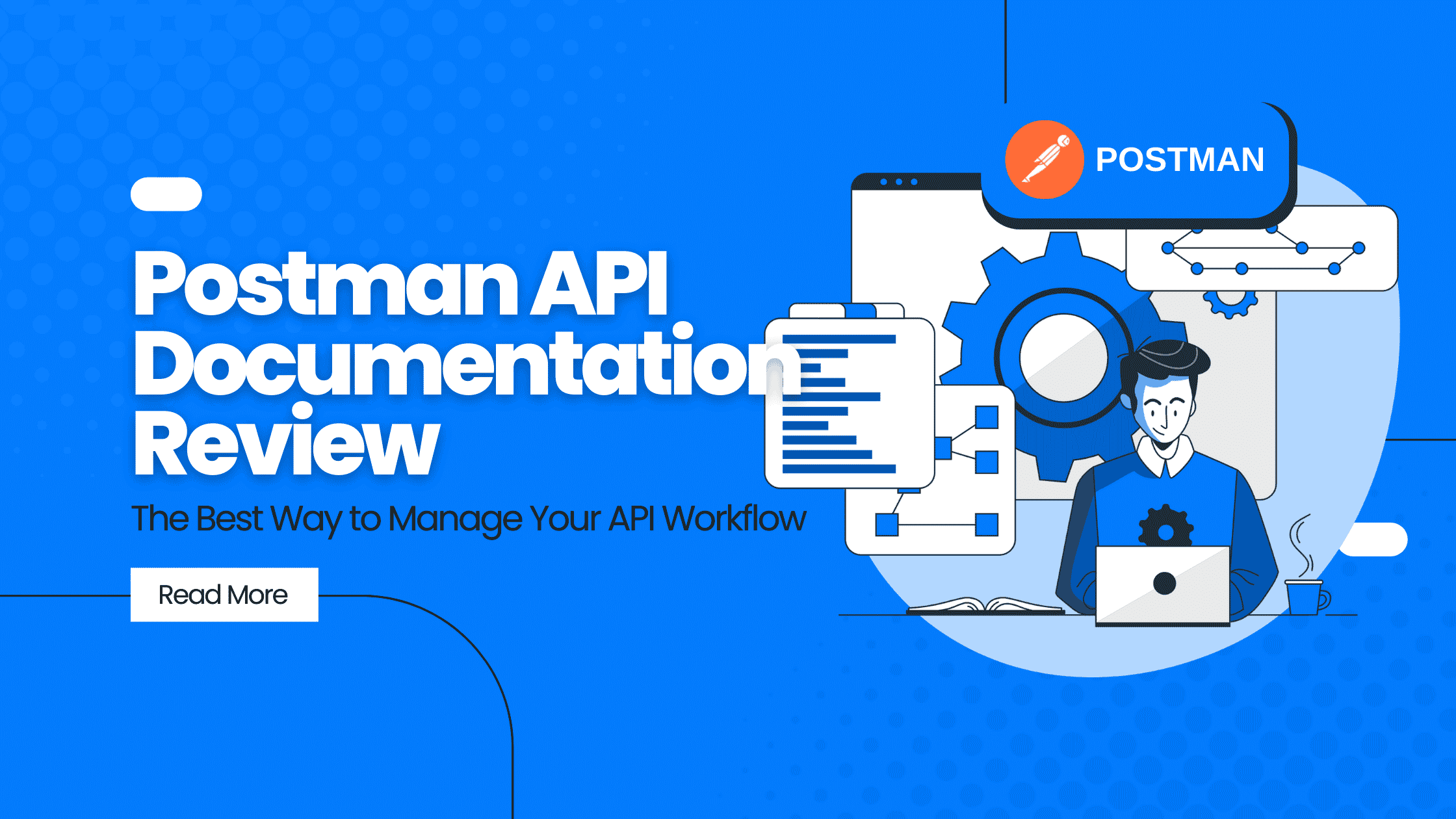If you’re a web developer, then you know how important it is to have a good API workflow. And the best way to manage your API workflow is with Postman. In this post, we’ll take a look at what Postman is and how it can help make your life easier.
Postman Review

Postman allows you to design, mock, debug, automate testing, document, monitor, and publish APIs simultaneously. It helps you store and manage all your API artifacts, making it easier to collaborate and stay organized.
Postman helps you to simplify each step of the API lifecycle. It has different workspaces for different needs, such as personal, team, and public workspaces. It is integrated with various tools in your development pipeline and is extensible.
But beyond its basic functionality, Postman offers several advanced features that set it apart from other API platforms. For example, Postman allows you to collaborate with team members in real time, making it easy to coordinate your work and keep everyone on the same page.
Postman includes advanced security features like OAuth 2.0 integration and two-factor authentication to give you peace of mind when working with sensitive data or APIs.
Key Features
Reporting
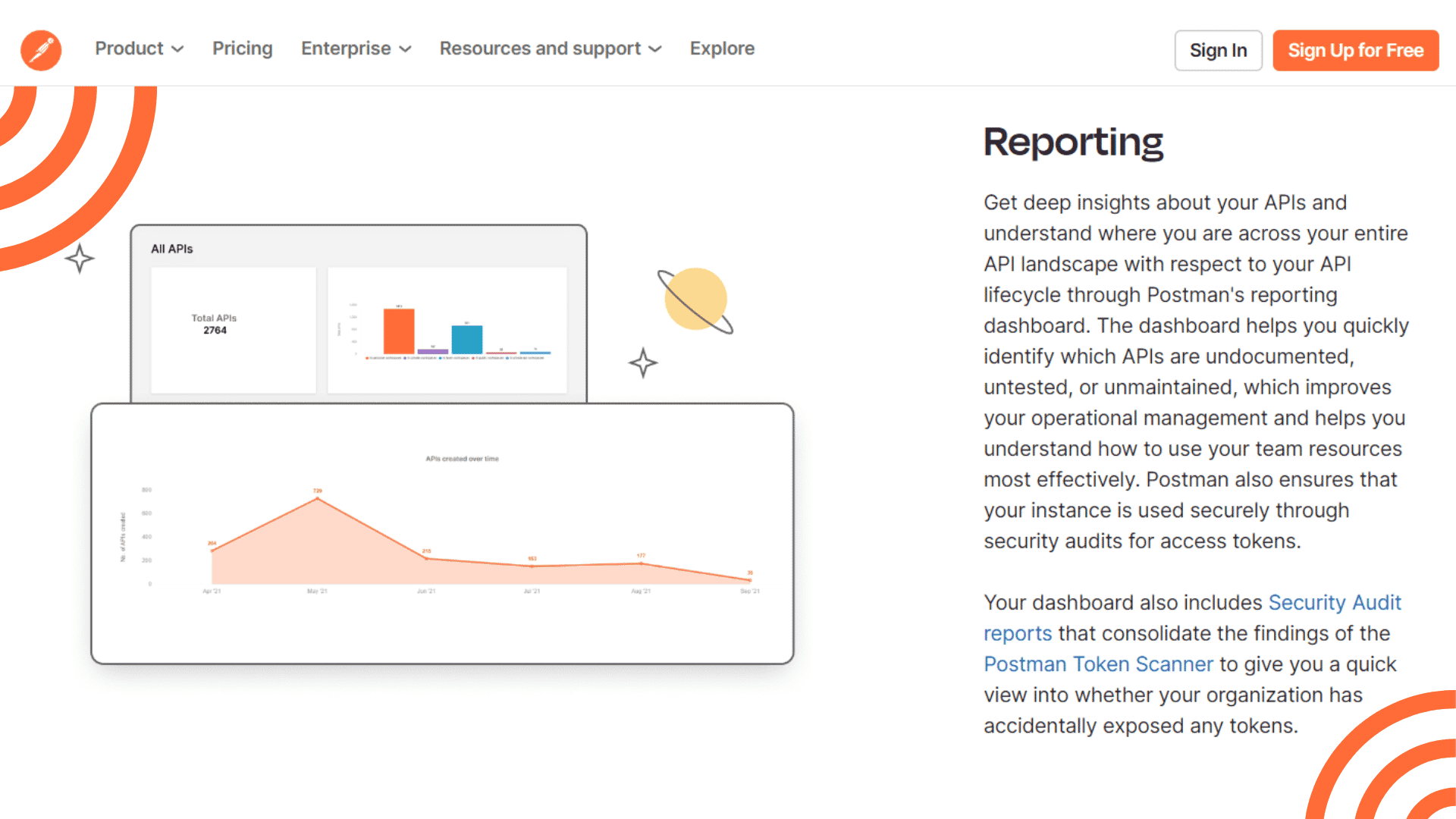
This software offers robust reporting capabilities that allow users to view detailed data related to their API usage, error rates, and more. In addition to basic reporting functions, Postman enables users to create customizable dashboards and share reports with colleagues. This makes it easy for teams to stay on top of their API development efforts and ensure that their APIs run smoothly.
Extensive support for APIs
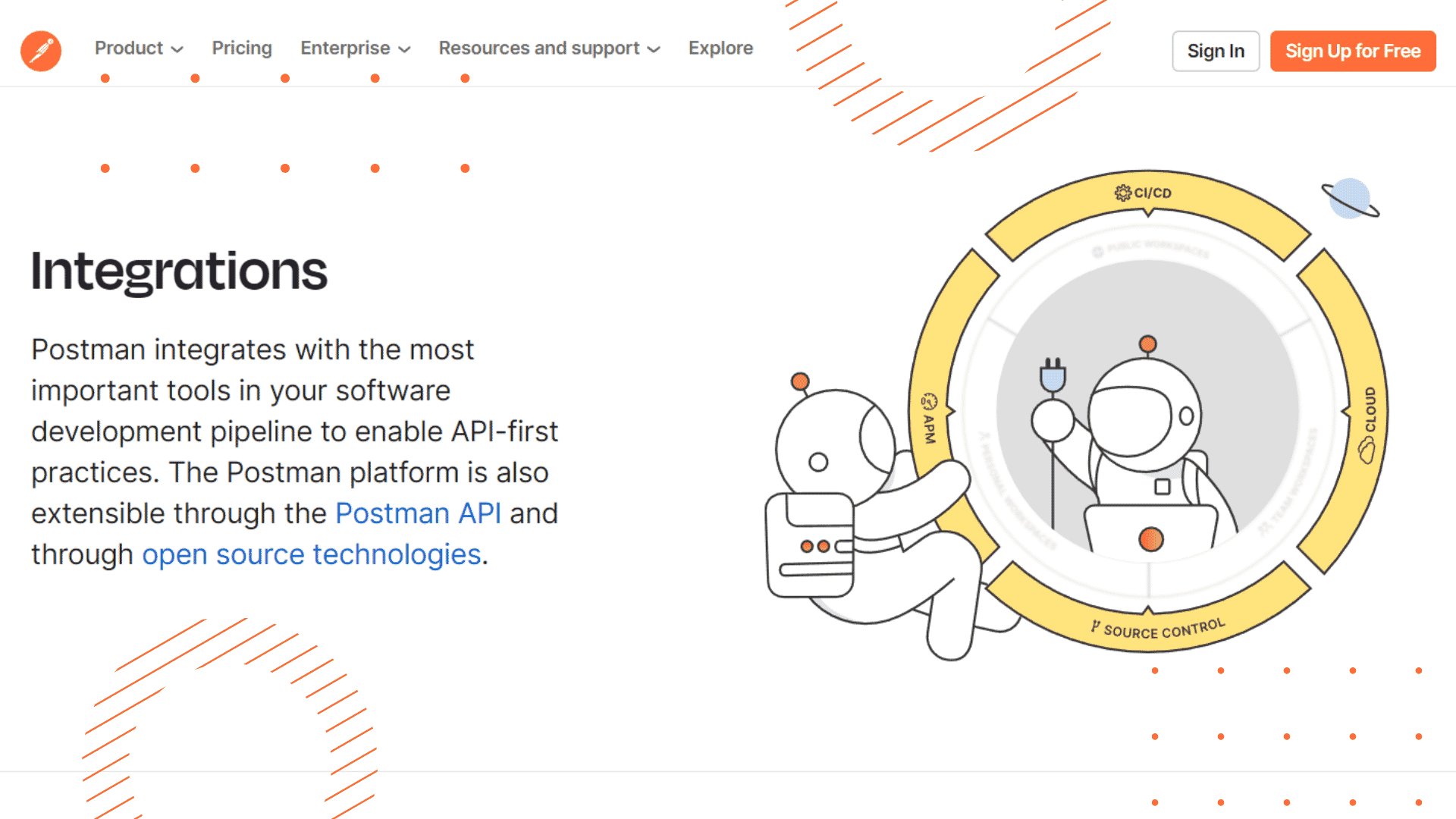
Postman comes equipped with support for over 250 API integrations from popular services like Google Sheets and Dropbox to web standards like OpenID and OAuth 2.0, as well as popular programming languages like Javascript and Java.
This powerful tool gives developers of all skill levels great flexibility when building APIs without relying on additional third-party libraries or frameworks.
SCIM Support
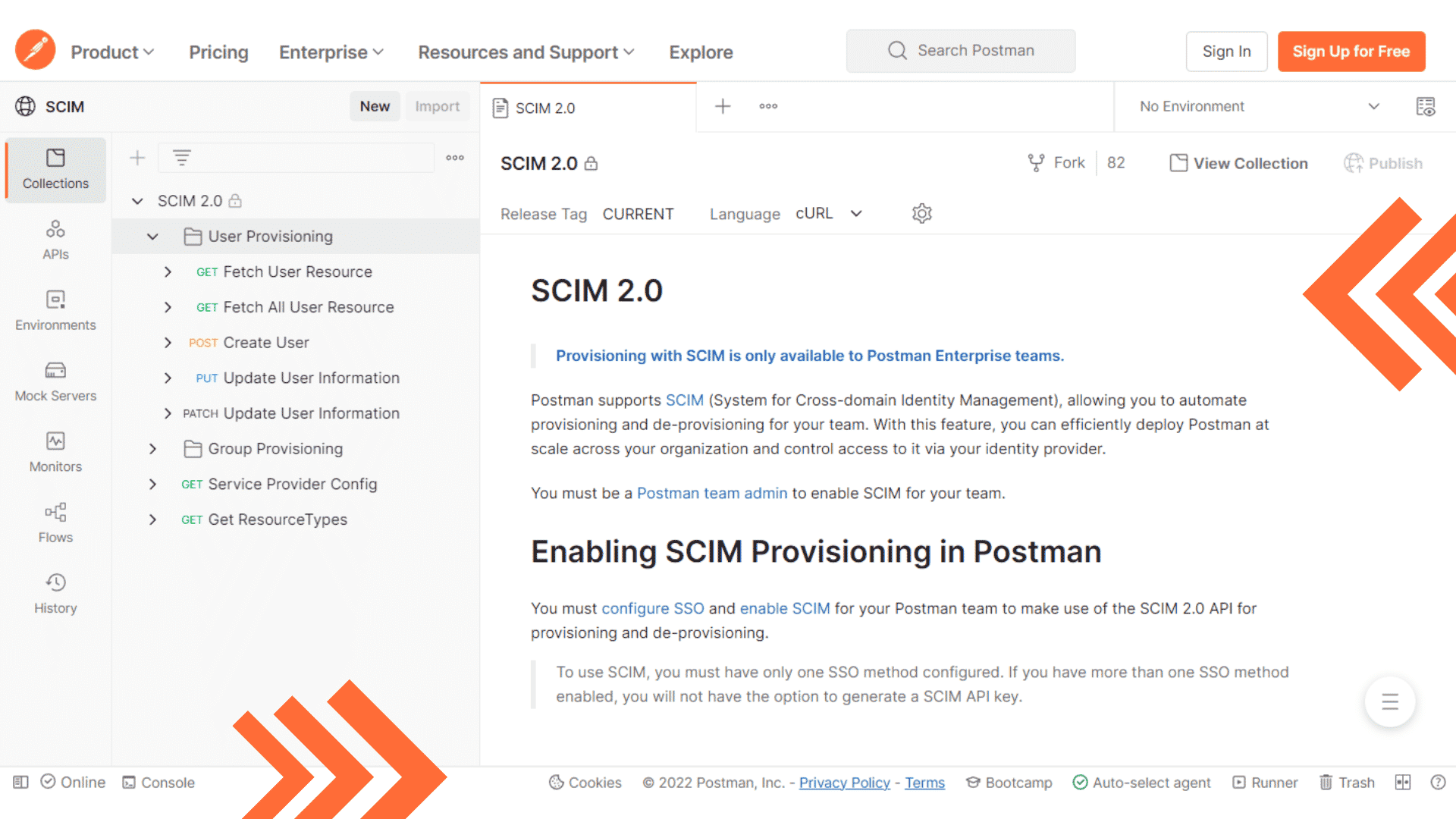
This software supports SCIM or the System for Cross-domain Identity Management. This allows users to easily create, update, and delete user profiles on their platform from anywhere in the world. Postman also makes it easy to integrate with other systems, such as HR databases, via industry-standard protocols like OpenID Connect and OAuth 2.0.
Token scanning
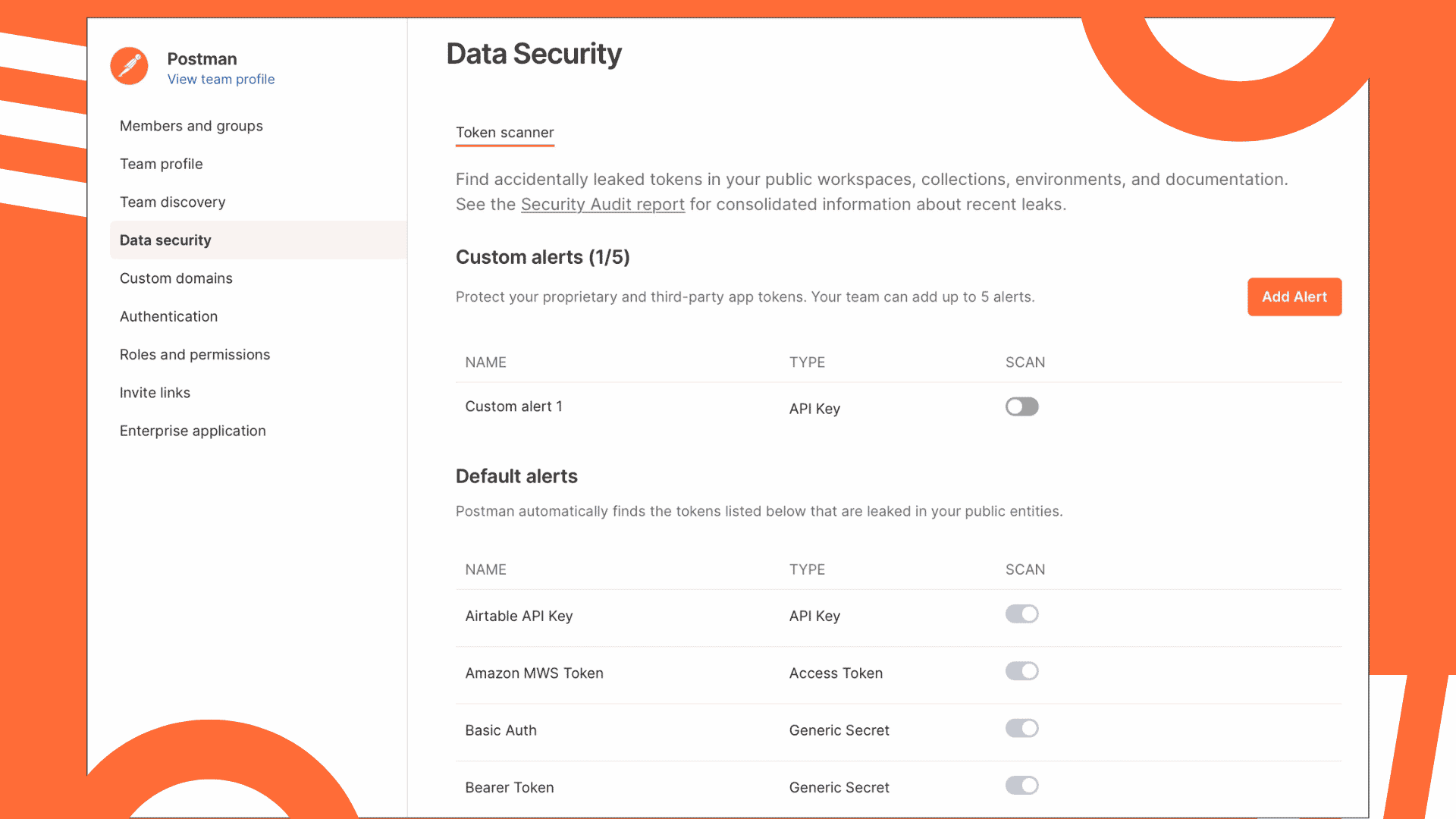
With token scanning, Postman helps to detect and validate dangerous tokens like usernames and passwords automatically, so you can focus on building your applications instead of hunting for sensitive data embedded in your requests/responses.
Its advanced monitoring capabilities let you track metrics such as latency, throughput, errors, success rates, and more in real-time or over time using highly customizable metrics dashboards.
Role-based access control
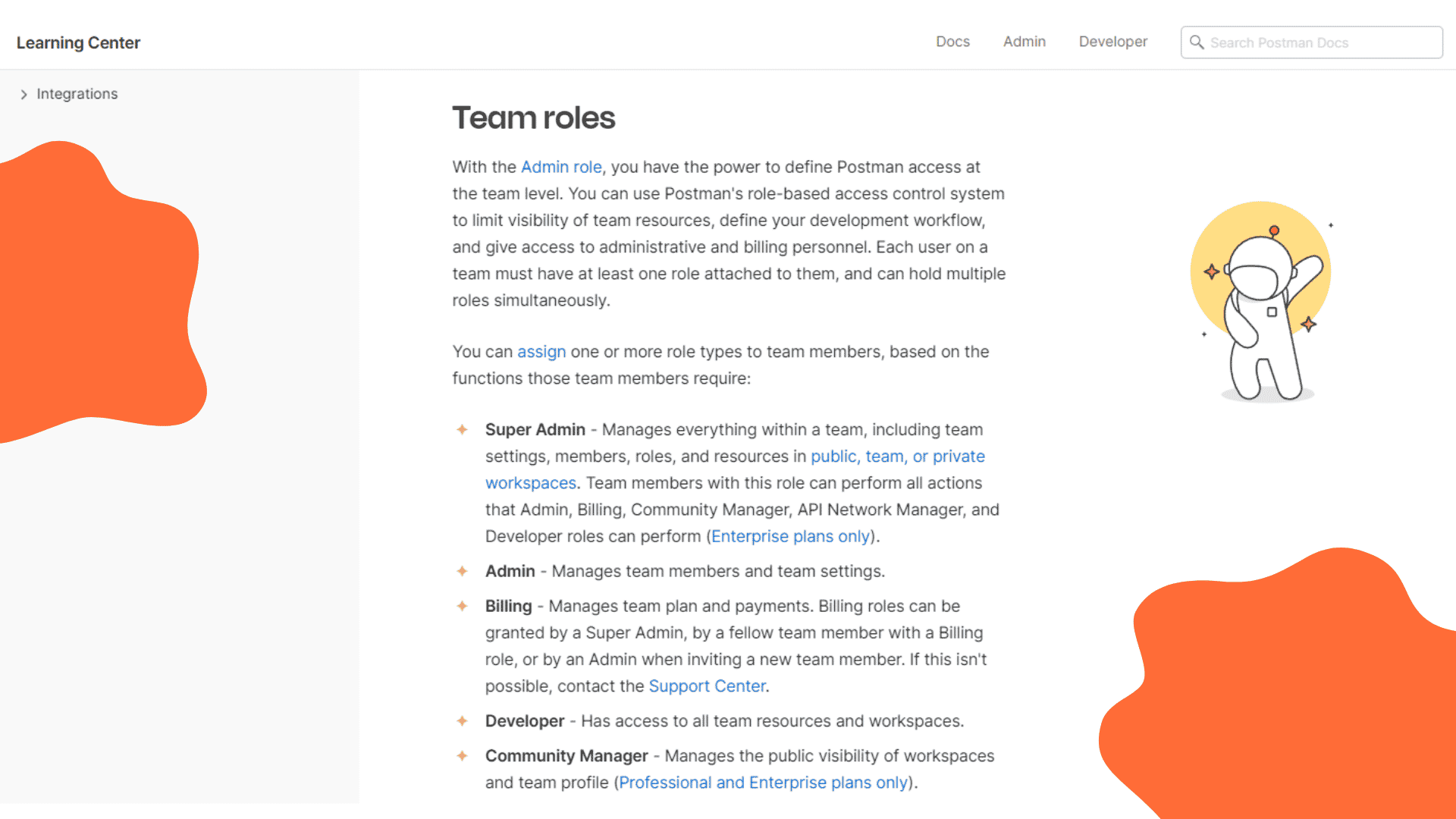
With RBAC, you can assign permissions for different users based on their roles within your organization. This allows you to efficiently manage system access for different individuals and ensure that only authorized personnel fully control sensitive data and functionality. It has other features such as user management, event logging, testing tools, and more.
Single sign-on
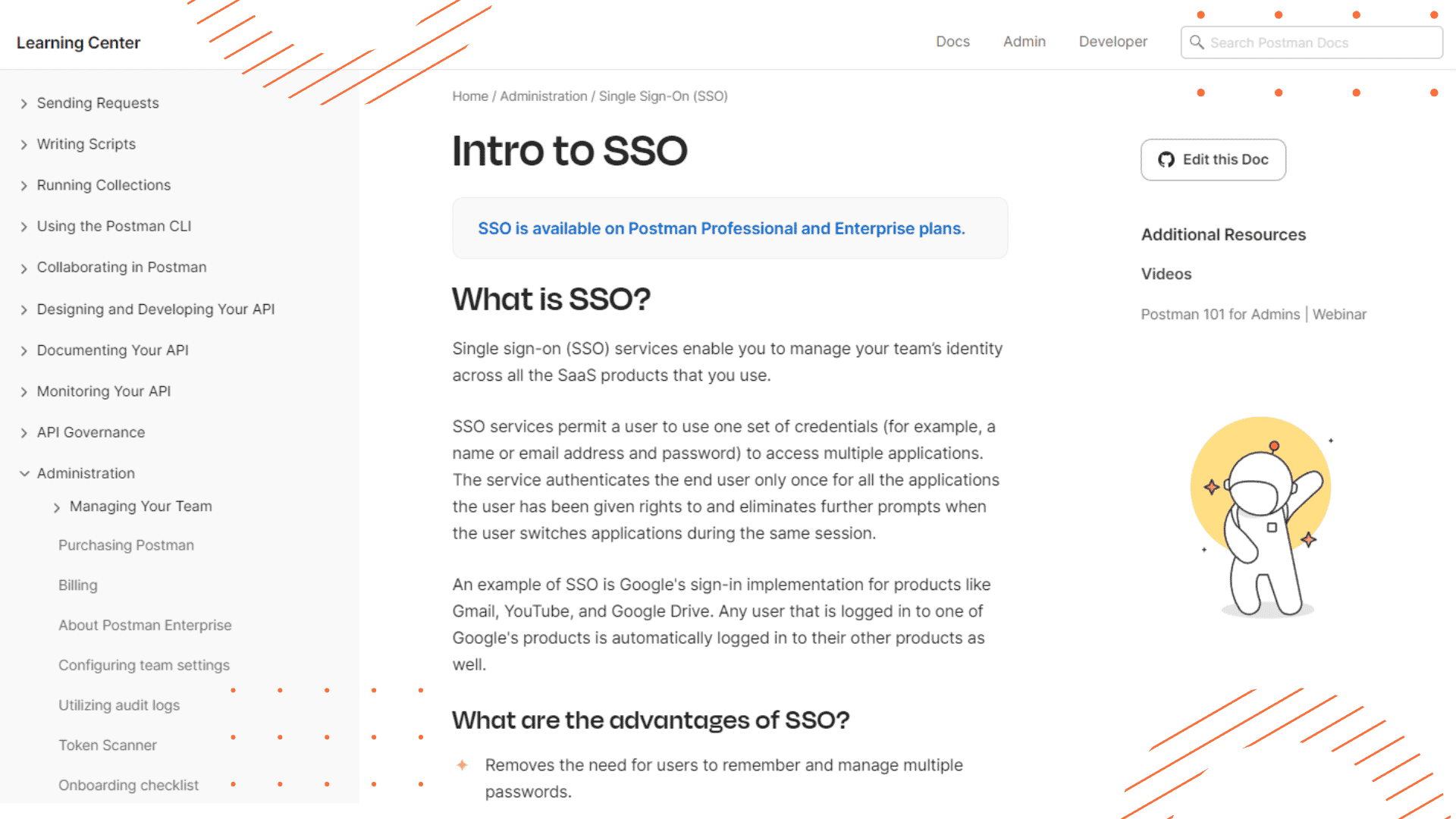
With this feature, users can easily log onto the platform and access all its tools and resources without creating separate accounts for each tool, including Google Apps, Salesforce, and Office 365.
This streamlines workflows by making it easier to navigate the site and gives users more security and control over their data. With single sign-on, tracking which tools you have accessed and what data has been accessed or modified using them is easy.
API monitoring
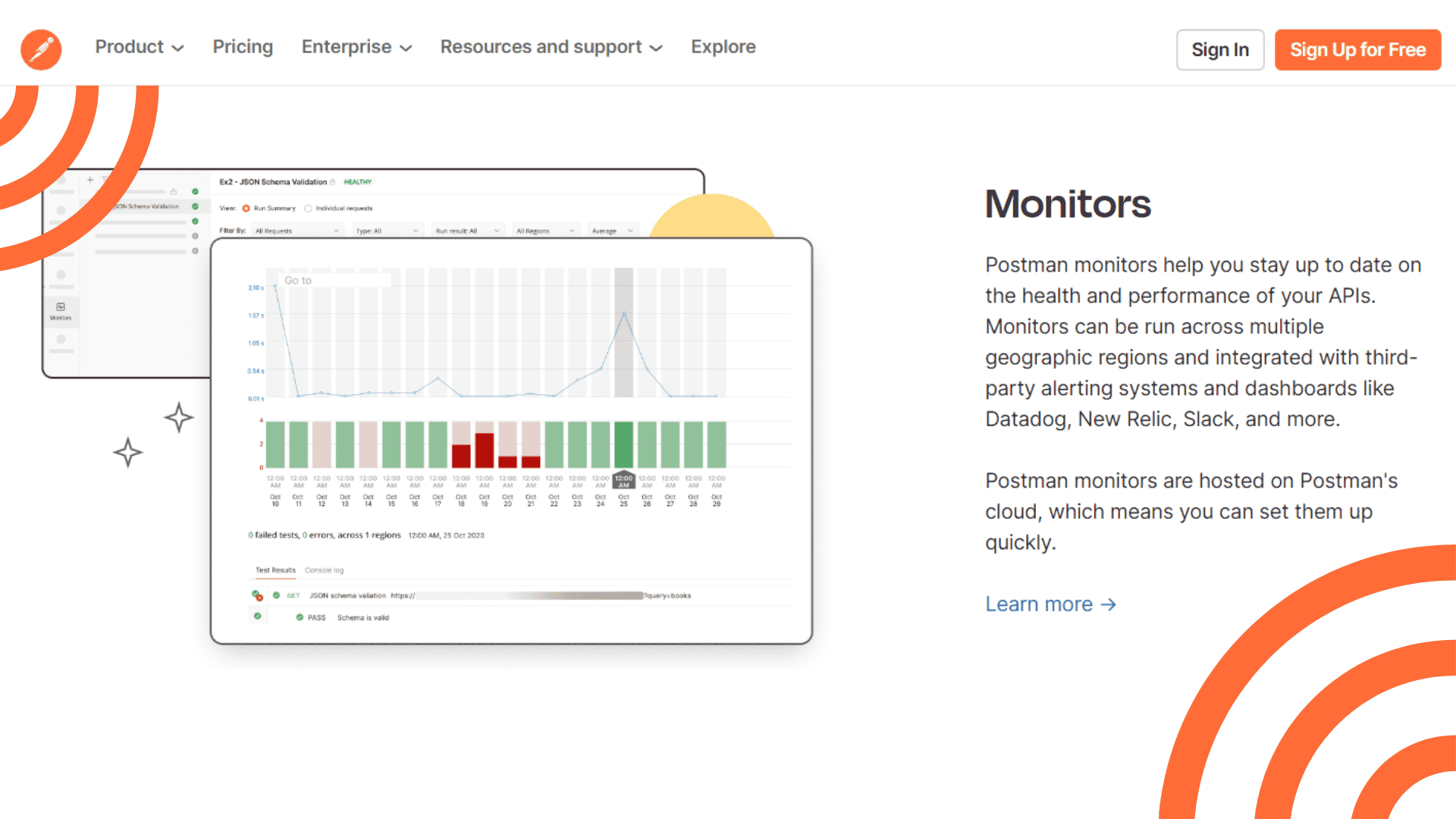
Postman features a powerful monitoring tool that allows you to track the performance of your API and troubleshoot potential issues. Its alerting system is highly customizable, so you can create filters to get notified about specific events or errors in real time. Plus, with Postman’s integrated HTTP Analyzer, you can easily analyze requests and responses for diagnostic purposes.
Comprehensive Audit logs
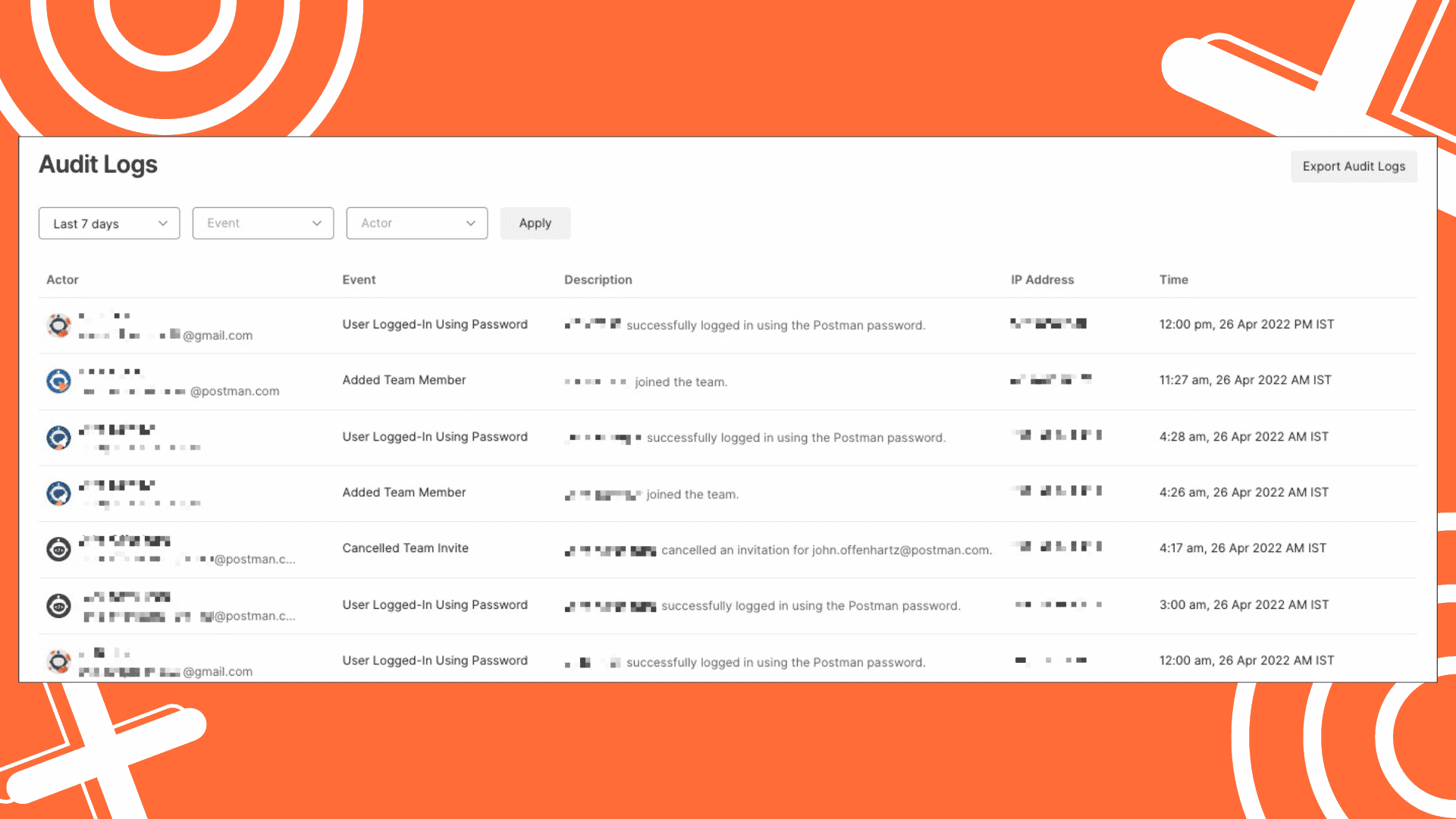
These audit logs provide a detailed log of all user requests through the platform, including information such as when and who created or deleted a collection or which user was involved in the process.
In addition to these detailed records, other useful information, such as metadata about the request itself – such as its size and body – is also included in the logs. This allows developers using Postman to gain valuable insights into how their APIs are being used and to troubleshoot any potential issues.
With the help of Postman’s comprehensive audit logs, developers can build faster, more efficient APIs without worrying about discrepancies or errors.
Collaboration capabilities

Postman offers an intuitive collaboration platform where teams can seamlessly share, edit, and collaborate on their APIs. Using the commenting feature, you and your team can provide context for changes, share feedback for improvements, or quickly fix bugs with a streamlined issue-tracking solution where they can keep track of API tickets over time, assign them to team members, and resolve issues faster.
Intuitive interface
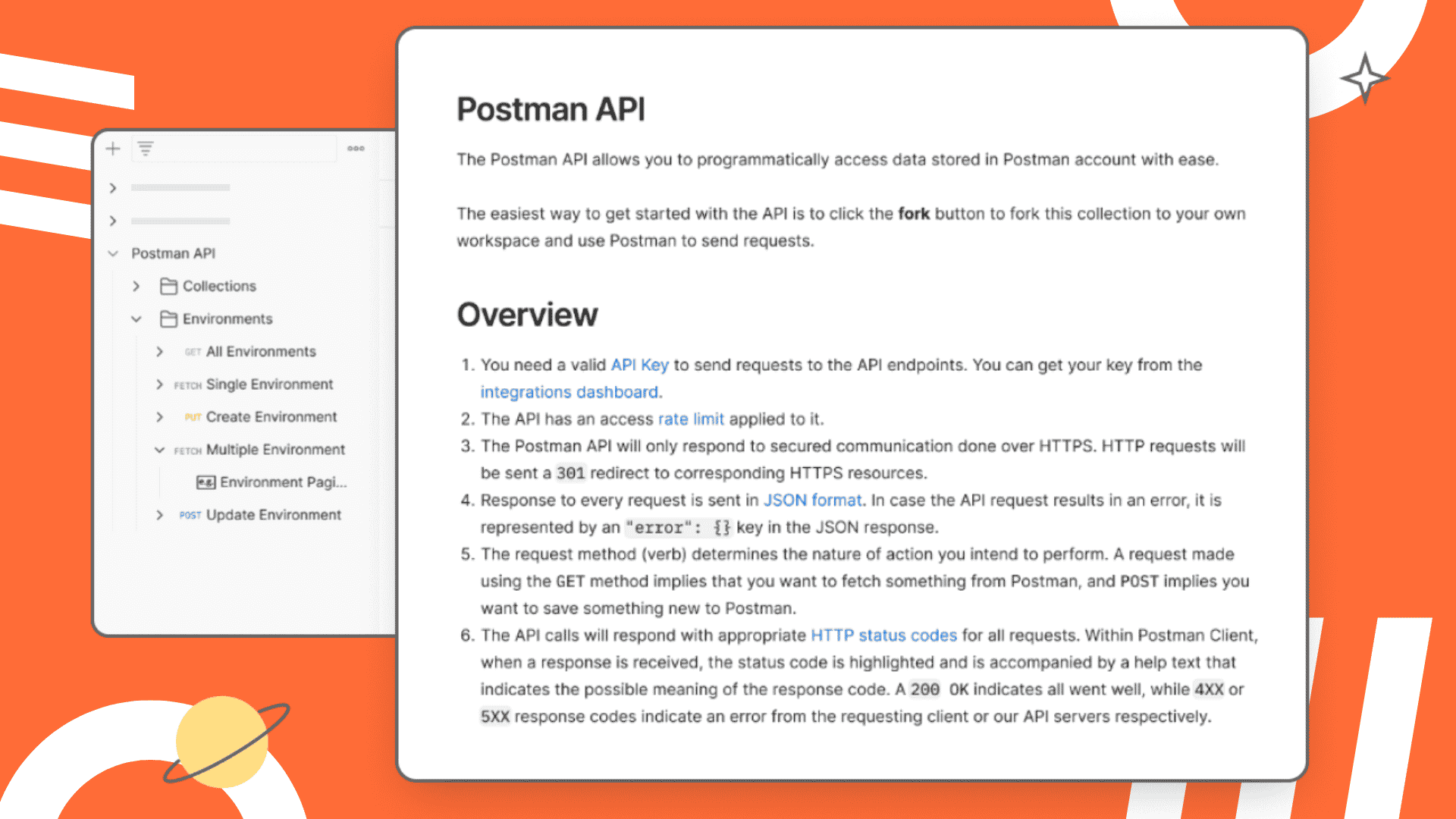
One of the best aspects of using Postman is its straightforward UI that makes creating and testing APIs quick and easy. The product’s clean design helps minimize interruptions as you work so that you can stay focused on your code! And with its fully customizable command line tools and keyboard shortcuts, developing APIs becomes even more effortless in Postman.
User Experience

At its core, the user experience in Postman revolves around two key concepts: simplicity and flexibility. Whether looking for an intuitive platform for building your APIs or a powerful tool for testing and managing existing APIs, Postman offers a streamlined interface that is both easy to learn and infinitely customizable.
Postman makes it simple to create, test, document, and share all your API projects, whether you’re working with cloud-hosted APIs, local JavaScript files, or third-party libraries.
And with robust documentation features like quickstart templates, code snippets, community forums, and responsive customer support, Postman is the ultimate platform for designing seamless user experiences.
And thanks to drag-and-drop functionality, you can create custom workflows for managing requests, crafting scripts, and configuring environment variables with a simple click of your mouse.
Support

Postman offers unparalleled support for both team collaboration and individual users. For teams, Postman enables easy sharing of both APIs and collections within larger organizations via centralized spaces where everyone can find what they need quickly.
And for individuals, the flexible collection-sharing features allow you to prototype APIs for yourself or your teammates easily. With its many powerful capabilities and stellar support structure, Postman truly stands out as one of the premier platforms for managing modern APIs.
What I Like (Pros)
- Postman offers an intuitive graphical interface, making it easy for developers to explore, test, and document their APIs without needing specialized programming or technical expertise.
- Postman versatility can be used to create APIs of all kinds, ranging from simple web services to complex microservices. This makes it a versatile tool for developers working in various industries and fields.
- Excellent support resources and tools allow users to get help with any issues they may encounter during the development process. If you need tips on best practices or help to debug specific error messages, Postman has you covered.
What I Dislike (Cons)
- Performance: One of the biggest concerns with Postman is its performance, especially when handling large response files that take longer to load and interact with. This can cause it to become sluggish or non-responsive for significant periods, frustrating users who need to work quickly.
- Lack of user-friendliness: This is particularly when it comes to an understanding of the different methods and what they are used for. While the Bootcamp section helps guide users through certain tasks, it doesn’t offer much insight into understanding all of the different options and capabilities of the platform.
- Inability to distinguish between base URLs: For example, if you have multiple tabs open for the same API call but with different base URLs, closing any one will require Postman to save data from all tabs. This can be frustrating and time-consuming when working with large or complex APIs.
However, despite these drawbacks, Postman remains a popular and useful tool for API testing and development. Its numerous features and intuitive interface make it easy to work with even complex APIs quickly and efficiently. While it may take some adjustment to use Postman, many QA professionals agree that the pros vastly outweigh the cons in this case.
Pricing
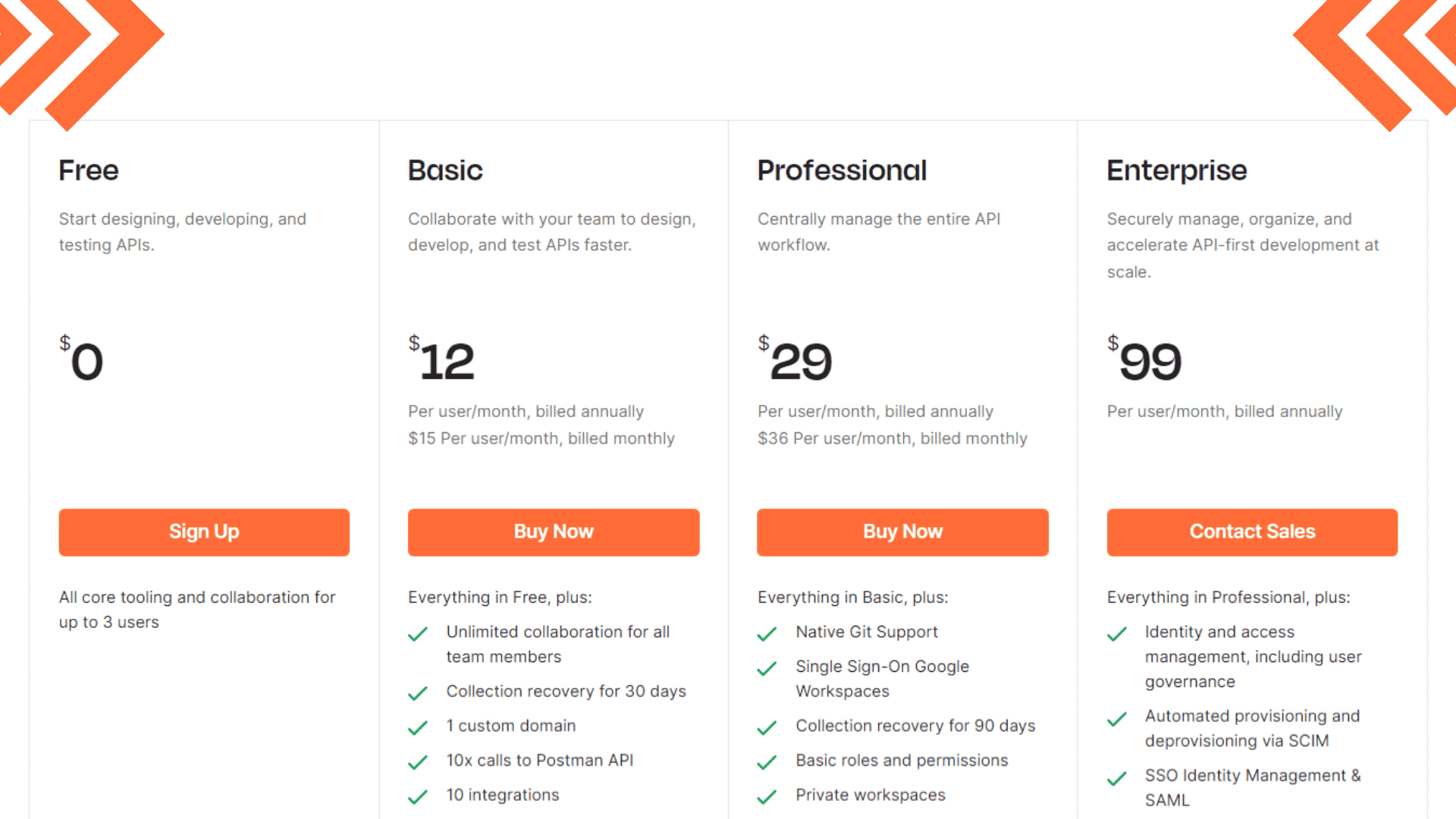
Postman provides a free plan for up to three users. It has four paid pricing plans which are:
Basic Plan – $12 per user/month
Professional Plan – $29 per user/month
Enterprise Plan – $99 per user/month
FAQS
What is the API integration process?
The API integration process involves connecting different software systems to streamline workflow and facilitate data transfer. This typically involves working closely with developers and end users to assess what kinds of data are needed, how the software should be configured, and how different users will use it.
Once a suitable API is found, the integration process can begin. This often includes tasks like setting up test environments, testing for functionality, troubleshooting issues as they arise, and making necessary adjustments or modifications. The API integration process requires a good understanding of technical and business needs to achieve optimal results.
How do API integrations work?
APIs, or application programming interfaces, are computer programs that allow different software applications to communicate and share data. An API integration typically involves a developer taking the APIs of two other software platforms and creating a system that allows them to communicate seamlessly and interchangeably.
This can be done in many different ways, depending on the individual user’s needs. For example, integration could involve tightly linking two software programs with one another or simply passing data back and forth using each platform’s unique APIs.
Whatever the approach, an effective API integration allows users to get more out of their various software tools by seamlessly integrating products and services from different providers. And as more businesses take advantage of this powerful technology, there is no doubt that their productivity and performance will improve dramatically in the years to come.
How does Postman Software compare to other API tools?
Compared to some of the other best API tools on the market, Postman offers many unique advantages. For starters, it’s free for all users and includes many useful features out of the box. Plus, there are tons of useful third-party plugins available that further extend its functionality while seamlessly integrating with existing workflows. If you’re looking for an intuitive way to work with APIs, Postman is tough to beat.
Conclusion
Overall, Postman is an incredibly powerful and intuitive API platform. Its user-friendly interface makes creating and managing new APIs easy, while its flexible testing capabilities allow users to debug issues easily and fine-tune their code.
The platform’s advanced features, such as collaboration tools and third-party integrations, make it well-suited for developers at all levels of experience.
Whether you’re a beginner just getting started with APIs or an expert looking for a reliable tool to optimize your workflow, Postman is sure to meet your needs. So if you’re looking for a robust API development tool that is both simple and sophisticated, I highly recommend giving Postman a try!
